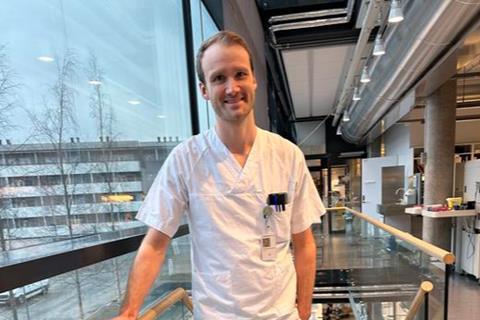Doctors at The Helgeland Hospital Trust in Arctic Norway received test results two days earlier than before, when they tested a new way to analyze blood samples for suspected sepsis. This could mean life or death for patients at your local hospital.

Every year some 49 million cases and 11 million sepsis-related deaths occurred worldwide in 2017, according to a study reported by the WHO. This accounts for 20 per cent of all global deaths.
It goes without saying that it is crucial to get quick and accurate answers on which bacteria have entered the patient’s blood, so that doctors can promptly administer the correct antibiotics to stop the infection. This is where two doctors from Northern Norway have confirmed a diagnostic breakthrough, now published in APMIS.
Small acute care hospitals
Hege Harboe-Sjåvik at Helgeland Hospital Trust and Kristoffer Hammer Endresen at Nordland Hospital Trust, in collaboration with CANS – Centre for New Antibacterial Strategies at UiT The Arctic University of Norway, examined a new analysis method for detecting bacteria in blood.
The BCID2 method was used at several smaller hospitals during the coronavirus pandemic to analyze COVID-19 tests, but it has not yet been used for rapid analysis of sepsis in Norway.
The doctors’ goal was to check if this new and fast method works just as well at smaller hospitals, compared to sending samples for analysis at a large laboratory at a bigger hospital.
This would be a significant step in the right direction for faster and better patient treatment for suspected sepsis at local hospitals. It is important for smaller hospitals, which are often far from the large laboratories, to find out which bacteria are behind an infection so that they can more quickly administer the correct antibiotics.
Faster analyses
The researchers reviewed the results from 160 blood samples with bacteria taken at Helgeland Hospital Trust in Mo i Rana, Sandnessjøen, and Mosjøen from July to December 2021. Rapid tests were performed at the various local hospitals, while the standard tests were carried out at a microbiological laboratory at the regional hospital in Bodø.
It turned out that the doctors in Helgeland both received the test results two days earlier than before, and they were almost as accurate as the tests done at the large laboratory in Bodø where the bacteria were cultured in the usual way.
The new method also revealed the possibility of providing better antibiotic treatment for the patient in one out of four cases.
Robust and accurate
“The conclusion is that this is a robust and accurate addition to traditional diagnostics for detecting bacteria in blood samples quickly. The method offers great potential for more targeted antibiotic use at local hospitals,” says Kristoffer Hammer Endresen.
“This is an innovative solution with great potential for better treatment and equitable services at local hospitals. Two days faster test results can have a significant impact on seriously ill patients at local hospitals. This can provide a more equitable patient service, without the need for patients or healthcare personnel to be moved between hospitals,” says Hege Harboe-Sjåvik at the Helgeland Hospital Trust.
“These are important findings for a growing patient group at local hospitals.”
Great opportunities
Kristoffer Hammer Endresen at the Nordland Hospital Trust says: “The results show great opportunities for more accurate antibiotic use, and that this is a tool with great potential to reduce unnecessary use of broad-spectrum antibiotics at local hospitals. This is important in the fight against antibiotic resistance.”
There were just under three per cent of cases where the new test failed to detect the bacteria that were present in the blood. And there were no cases where the rapid test indicated the presence of bacteria in the blood when there actually were none, so-called false positives.







No comments yet